Interior experts say your sofa cushions absolutely don’t need to match – this is the one rule they recommend following instead
This is why matching cushions are out and mix-matching is in
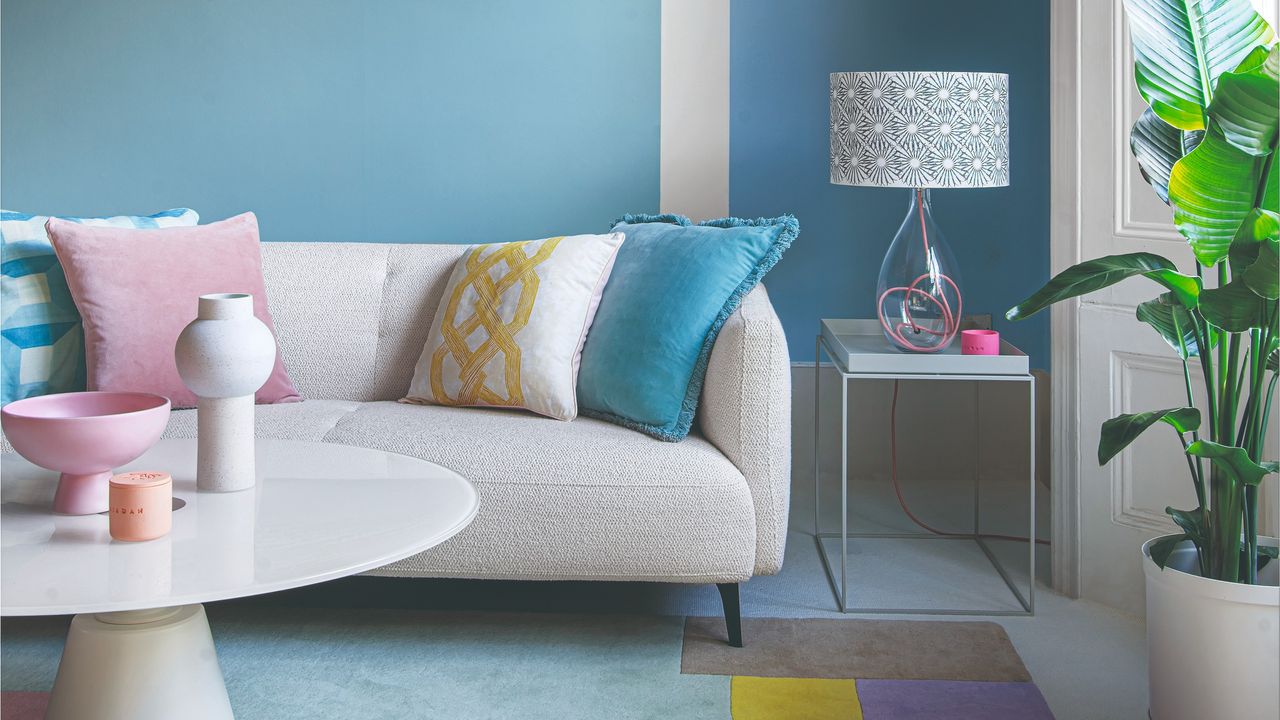

Who doesn’t love sofa cushions?! They are one of the easiest ways to embrace a new trend, add an extra layer of texture to the living room and to jazz up any old (or new) sofa. But should sofa cushions match one another in order to create a luxurious, sophisticated look?
Even the best sofa can be further elevated by the right selection of cushions – but styling them can be both fun and a challenge at the same time. While traditionally, sofa cushions would usually be matching, these days, it’s the exact opposite.
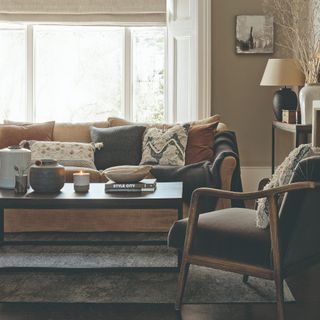
‘I’m a firm believer that sofa cushions don’t need to match one another,’ says Sabina Miller, buying director at Heal’s. ‘Embracing clashing prints, patterns, textures, and bold colours can transform any settee into a beautiful focal point in your living room, creating a visually striking and uniquely personal look. Mixing different designs adds depth and character, making your sofa arrangement a vibrant reflection of your individual interior style.’
But this leads to more questions. The biggest of which is likely this – how do you know what cushions to group together? Since opting for matching cushions is not something our interior experts recommend, they’ve shared an alternative rule to follow in order to make your cushions look more expensive and always end up with a perfectly styled sofa.
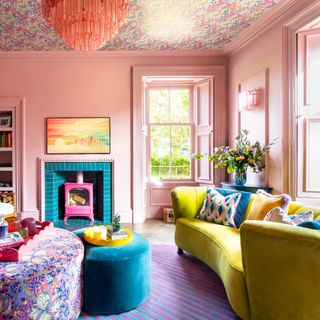
What rule experts recommend following instead
Similarly to the rule on how many cushions you should have on your sofa, there’s also an expert-backed recommendation for when you’re choosing your sofa cushion designs – and that advice is that there should be a commonality between them to prevent clashing and to show that your styling was deliberate.
‘Mixing different cushions can actually add personality and depth to a space,’ says Victoria Foster, interior stylist at ScS. ‘However, they should complement each other in at least one of these areas: their colour palette, texture, or pattern to create a cohesive look. You can effortlessly achieve a layered and dynamic aesthetic with varying sizes, shapes, and styles.’
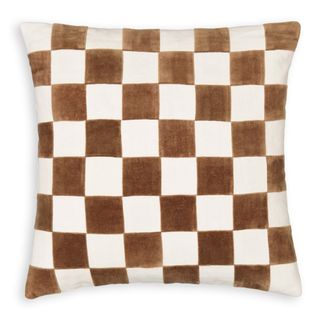
The combination of these three cushions is the perfect example of how to approach sofa cushion styling as all of these cushions are within a common colour scheme of brown and cream (which is a huge living room trend at the moment) but they bring variety through texture, shape and pattern. Starting with this cotton velvet chequerboard style in brown and cream from La Redoute.
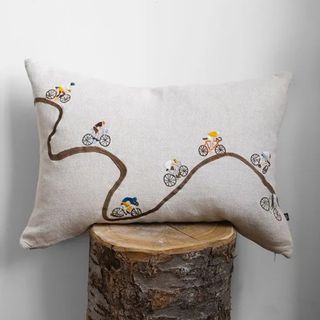
These embroidered cushions from Fine Little Day have been a home decor trend in their own right for the past year or so, loved for their ability to convey their owners personality and hobbies - whether that's swimming, football or, in this case, cycling. And the winding road in a brown stitch ties this design perfectly into the overarching scheme here.
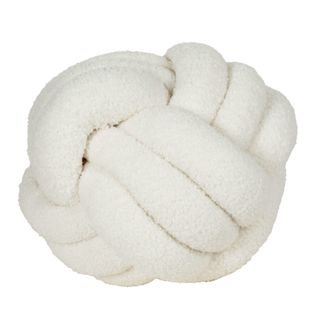
Ball cushions have been trending for a while now. But the knotted take on the look makes it more elevated, intriguing and textured. And we couldn't pick a better companion for the other two cushions as it's within the colour scheme and it brings a whole new shape and finish to the table.
Shelley Cochrane, accessories buyer at Furniture Village, agrees, ‘Cushions don’t necessarily need to match perfectly, but they should have some unifying element, such as a colourway or design motif – a common thread that weaves the look together. This provides cohesion without making the space feel too “matchy.” For example, cushions might feature different patterns – one might have stripes while another has a geometric print, but both could use a similar colour scheme to tie them together.’
Get the Ideal Home Newsletter
Sign up to our newsletter for style and decor inspiration, house makeovers, project advice and more.
When it comes to the cushions’ colours, keep the overall living room colour scheme and sofa shade in mind, too, so that it complements them as well.
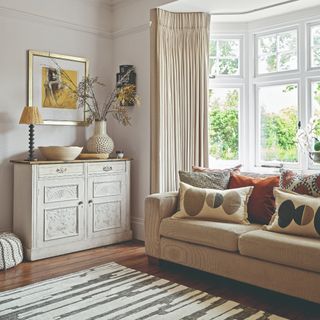
Should your cushions match your sofa?
We’ve already established that your sofa cushions don’t need to match each other, as long as there is some kind of a common theme running through them all. But when it comes to the question of whether you should match your cushions to your sofa, the answer is not so clear-cut. There are valid arguments for both sides.
If you’re going for a minimalist or a very one-toned look, matching your cushions to your sofa can work and make your sofa look expensive. ‘Whether the cushions need to match the sofa depends on preference; if you seek a polished and coherent aesthetic, cushions with similar styles will be best,’ says Paulina Wojas, interior designer at Lovesofas.
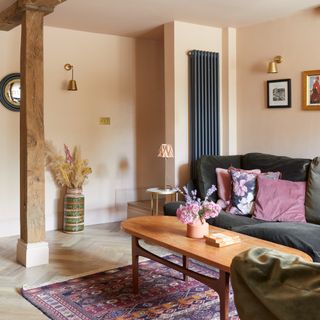
Lena Gierasinska, head of product and displays at Barker and Stonehouse adds, ‘Uniformity can work in certain settings, like a minimalist design.’
She then adds, rooting for the other side of the argument, ‘Cushions do not need to match a sofa. Having cushions in colours or patterns that contrast with the sofa can help break up solid tones and bring life to the design.’
Victoria at ScS continues, ‘Sofa cushions don’t need to match the sofa exactly, but they should harmonise with it. If the sofa is a neutral colour, you might use bold or patterned cushions to add visual interest. Conversely, if the sofa is a statement piece with a strong colour or pattern, consider using more subtle cushions to balance the overall look.’
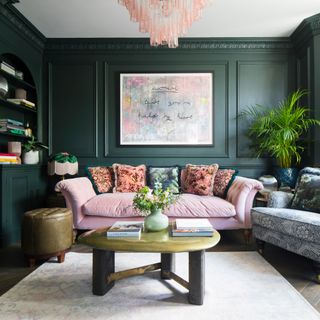
Cushions are hard workers, serving both a functional and aesthetic purpose, making our sofas more stylish and more comfortable at the same time. But these tips will make them work even harder for you and your living space.

Sara Hesikova has been a Content Editor at Ideal Home since June 2024, starting at the title as a News Writer in July 2023. She is now also the Ideal Home Certified Expert in Training on Furniture, and so far has tested 80 different sofas.
Graduating from London College of Fashion with a bachelor’s degree in fashion journalism in 2016, she got her start in niche fashion and lifestyle magazines like Glass and Alvar as a writer and editor before making the leap into interiors, working with the likes of 91 Magazine and copywriting for luxury bed linen brand Yves Delorme among others.
You must confirm your public display name before commenting
Please logout and then login again, you will then be prompted to enter your display name.
-
 IKEA’s new JÄRLEK collection has embraced the year’s biggest glassware trend — these are our top picks from the playful collection
IKEA’s new JÄRLEK collection has embraced the year’s biggest glassware trend — these are our top picks from the playful collectionWe've been seeing two-toned glassware everywhere this year
By Kezia Reynolds
-
 Lidl's £30 alternative to Le Creuset's cast iron dish is in the perfect pastel shade to get ready for Spring
Lidl's £30 alternative to Le Creuset's cast iron dish is in the perfect pastel shade to get ready for SpringWe're heading straight to our nearest store
By Holly Cockburn
-
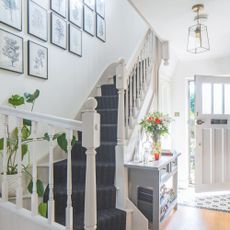 How to patch up holes in a wall — restore your walls to their former glory, no DIY experience required
How to patch up holes in a wall — restore your walls to their former glory, no DIY experience requiredA step-by-step solution to gallery wall switch-ups or accidental damage
By Lauren Bradbury